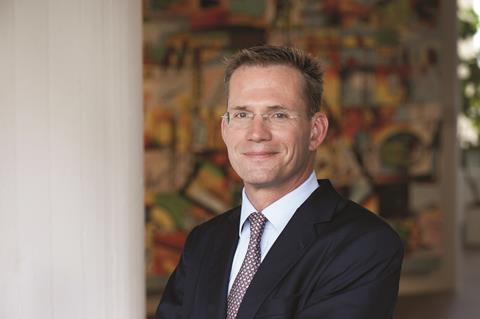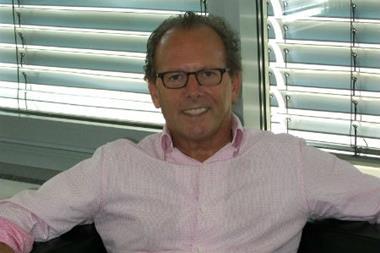The new head of German risk and insurance association says he wants to redefine what the organisation stands for and to be a force for change in the sector

Although his career is no accident, like so many top risk managers the new head ofthe Deutscher Versicherungs-Schutzverband (DVS), Dr Alexander Mahnke, earned his stripes elsewhere in corporate life.
“I came back to this community only three years ago,” he says. “I started as a lawyer, working for my predecessor at Siemens, Dr Stefan Sigulla, and then joined Aon and Marsh. So I’ve been a third-party broker longer than I’ve been a risk manager. But having come back consciously, I have many ideas and much can be done to further professionalise risk management.”
Mahnke believes in the power of professional organisations such as the DVS to be a force for change in the sector. “From the first day I was asked to lead the DVS, I said I wanted to see the organisation once again being the opinion leader in the market.
“The association’s history dates back to 1901 and it aims to protect companies in the insurance market that cannot protect themselves and help them develop professionally.
“We have to reshape our vision and show members something can to be gained from a discussion with us. We can get together with the insurers – and brokers – and work things out.
Of course, the insurers have mixed feelings, but they respect the energy that the DVS can bring to the market.”
Leadership like this requires the approval of the membership and Mahnke believes many risk managers already share his vision.
“I already have the support and commitment of the more outspoken members of the risk management community,” he says.
“But we need to look at ourselves and reshape what we stand for. There is no ‘standard’ member. Many are representing smaller companies – risk management may be only one aspect of their role – and the DVS represents an opportunity for them to leverage the collective strength and knowledge of their peers.
“Others are in the privileged position to speak for larger companies with the respective resources for insurance, but they may well represent companies from different industries with different challenges in respect of insurance. This needs to be addressed and leveraged within the DVS.
“[This feels] like coming to any organisation that has been around for a long time and forgot its ability to change. This will be a change management process, a traditional one, but one that many have not yet experienced.”
Market pressure
The room at the DVS symposium this month will not be filled only with risk managers, but also insurers and, for Mahnke, it is essential the latter should be at the centre of discussions.
He believes many find themselves in a difficult position. Their shareholders are putting a lot of pressure on them; their loss ratios are increasing. In addition, the market expects them to do something different – which is hard to achieve on their own.
“They tend to create these small research and development groups who get in the room, think something up and then are surprised when it’s not exactly what their clients have been looking for,” Mahnke says.
“There is not enough content-driven communication in the market. It is a market of extroverts – we all talk a lot – but I am not convinced that there is always enough content to that communication.
“The DVS symposium can be the perfect place for a better conversation and we have gone to a lot of effort to make sure we are having discussions beyond the traditional areas of just hearing what is going on elsewhere in the market.”
Mahnke believes that what can be achieved with a real conversation is illustrated by his experience at Siemens. “Two years ago, we looked at our property and engineering lines of business from a client perspective, for those who have first-party losses,” he says.
“It was clear to us that it doesn’t matter to them if a loss is covered under a CAR/EAR insurance or under a property PI.” With that in mind, Mahnke and his team created a global property construction programme with two new elements. The first was a global engineering solution, something he believes the market had neglected, focusing instead on cover project by project. The second element was a combined property and engineering line.
“When we first spoke to brokers and insurers about this, it was a relief they didn’t laugh out loud,” says Mahnke. “They didn’t take us too seriously, either. But we continued, and although there was a time when I thought that it wouldn’t fly if the market didn’t buy in, I also reckoned that if any company could make this happen, it would be Siemens. We are, after all, one of the largest insurance buyers in the world.
“Twelve months later, not only did we get what we wanted, with terms and conditions written by Siemens – it had placed it in the market and could have bought much more capacity than it wanted. There was overcapacity.
“It shows that if you put in expertise, define your demands and have a good grip on your numbers and exposure, you can create almost any insurance solution you want. Insurance is not of value in itself. It is always the last option when you consider your risk. This is the perfect example of innovation.”
Nurturing ideas
It is solutions such as this that Mahnke hopes will be nurtured when people meet in Munich this September.
“I find myself in large shoes, picking up from my predecessors, but I hope the DVS and the DVS symposium can become more international and attract more people from outside Germany,” he says.
“I want the association one way and the event to be a place where you can safely network and meet more people and be of real value to our members.
“There is a long road ahead of us as risk managers, but we are making process. A lot of low-hanging fruit remains that we can pick just by thinking straight and doing the right thing.
“As an insurance risk manager, there is so much you can do around the product; it’s such an exciting profession. And yet, so few have grasped it. What they do is procure a product – and they do that well and it keeps them busy. But they can do more. We need to create a narrative to explain where we place ourselves and show the others in our companies what we do.
“We need to start thinking beyond insurance.”




















No comments yet